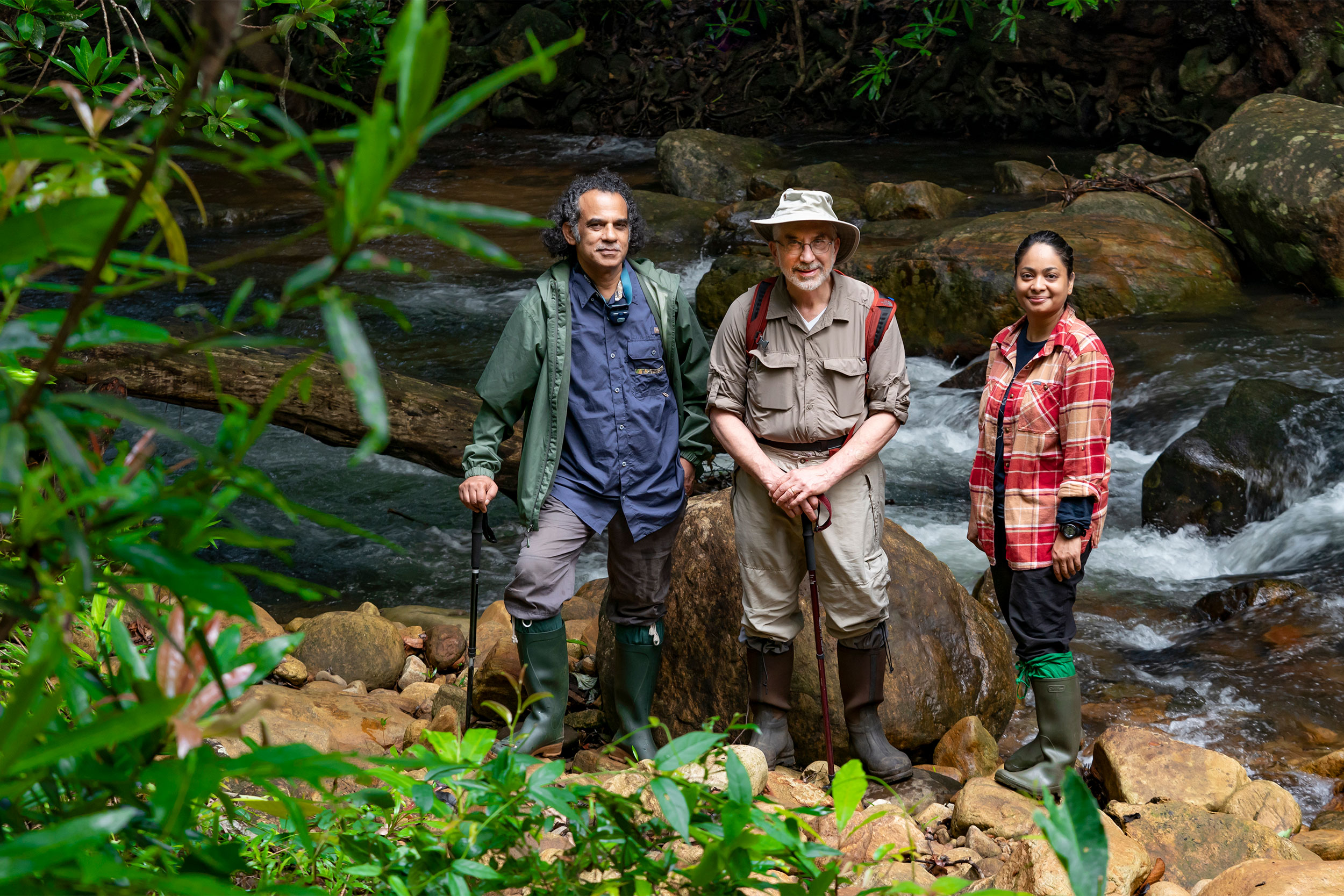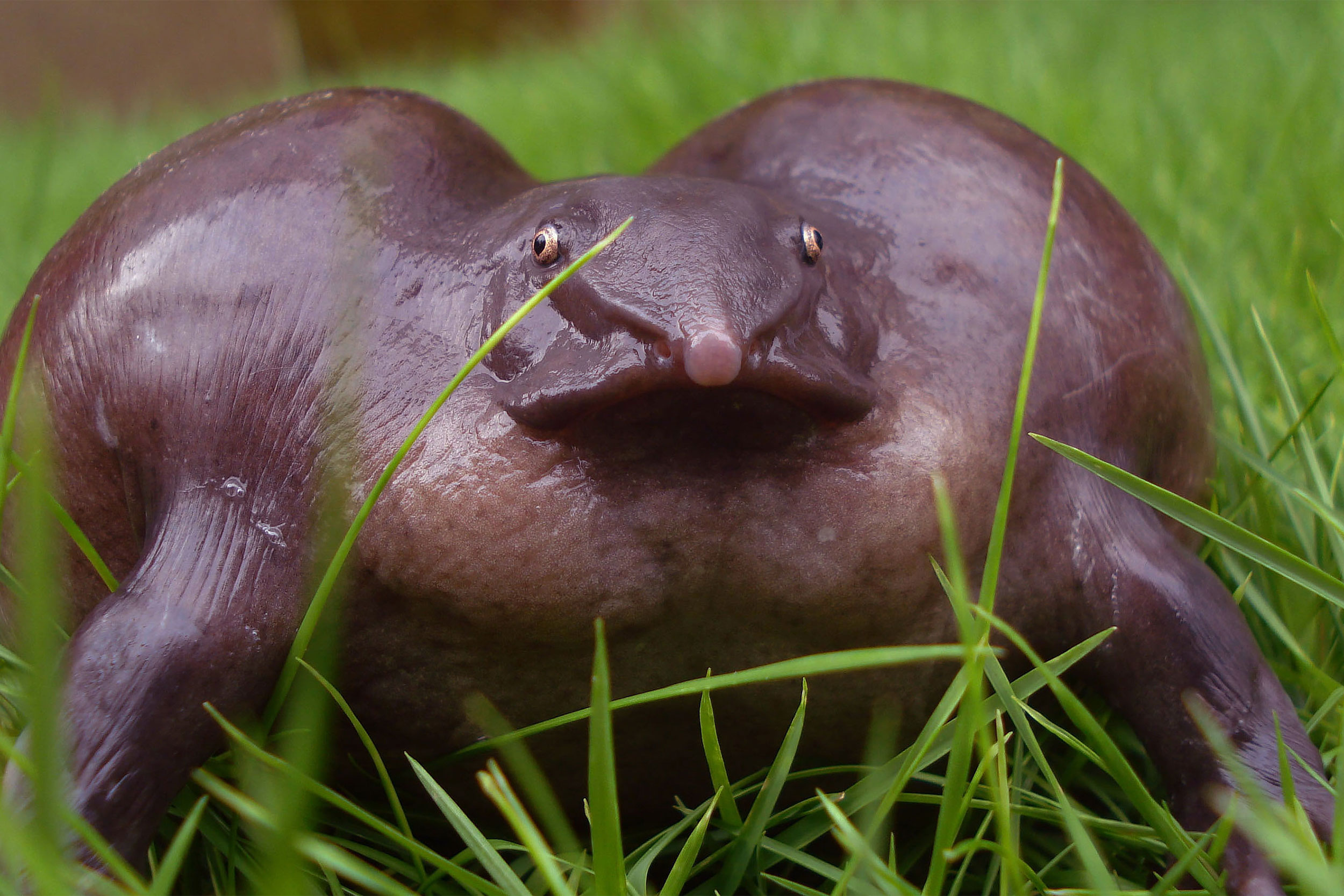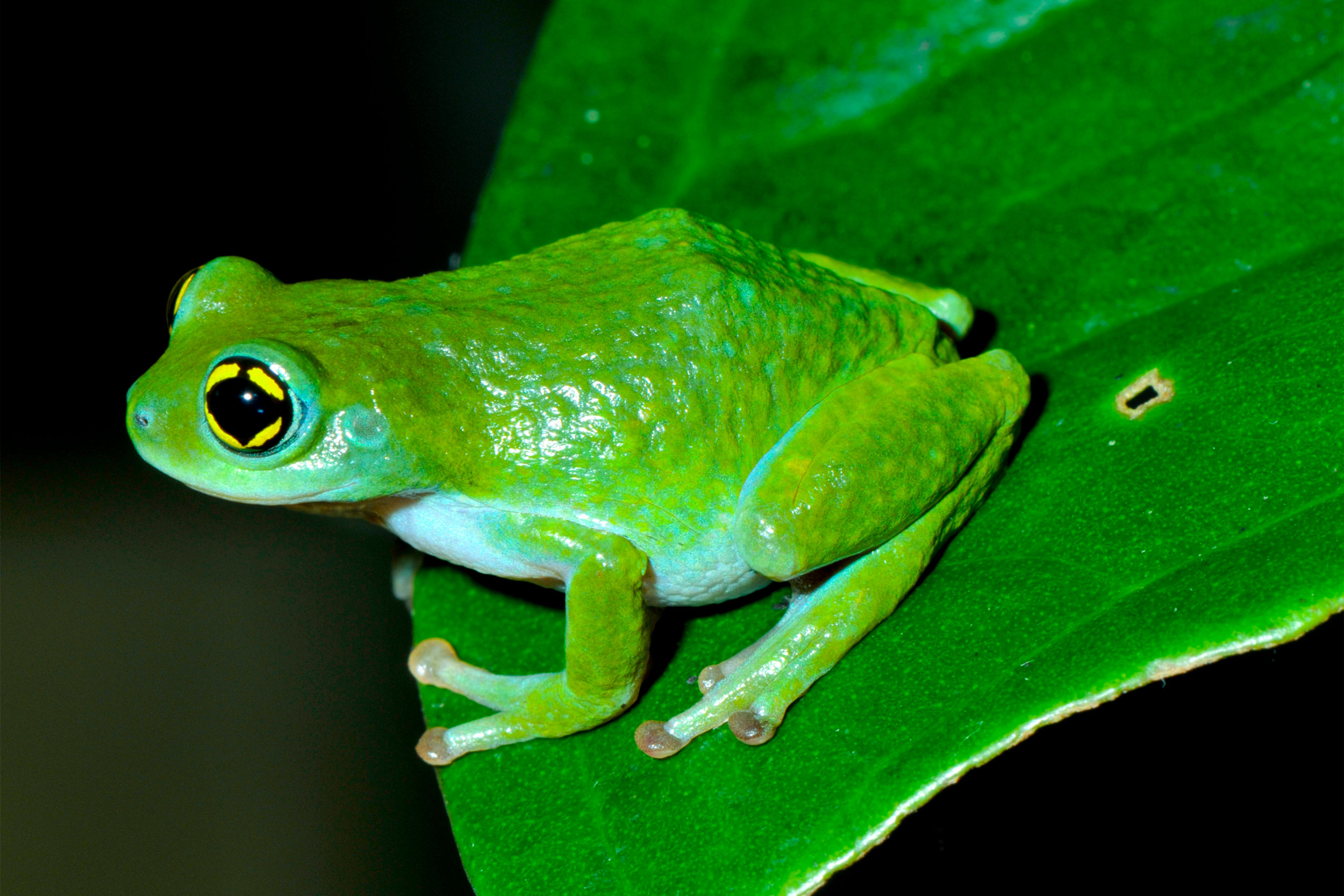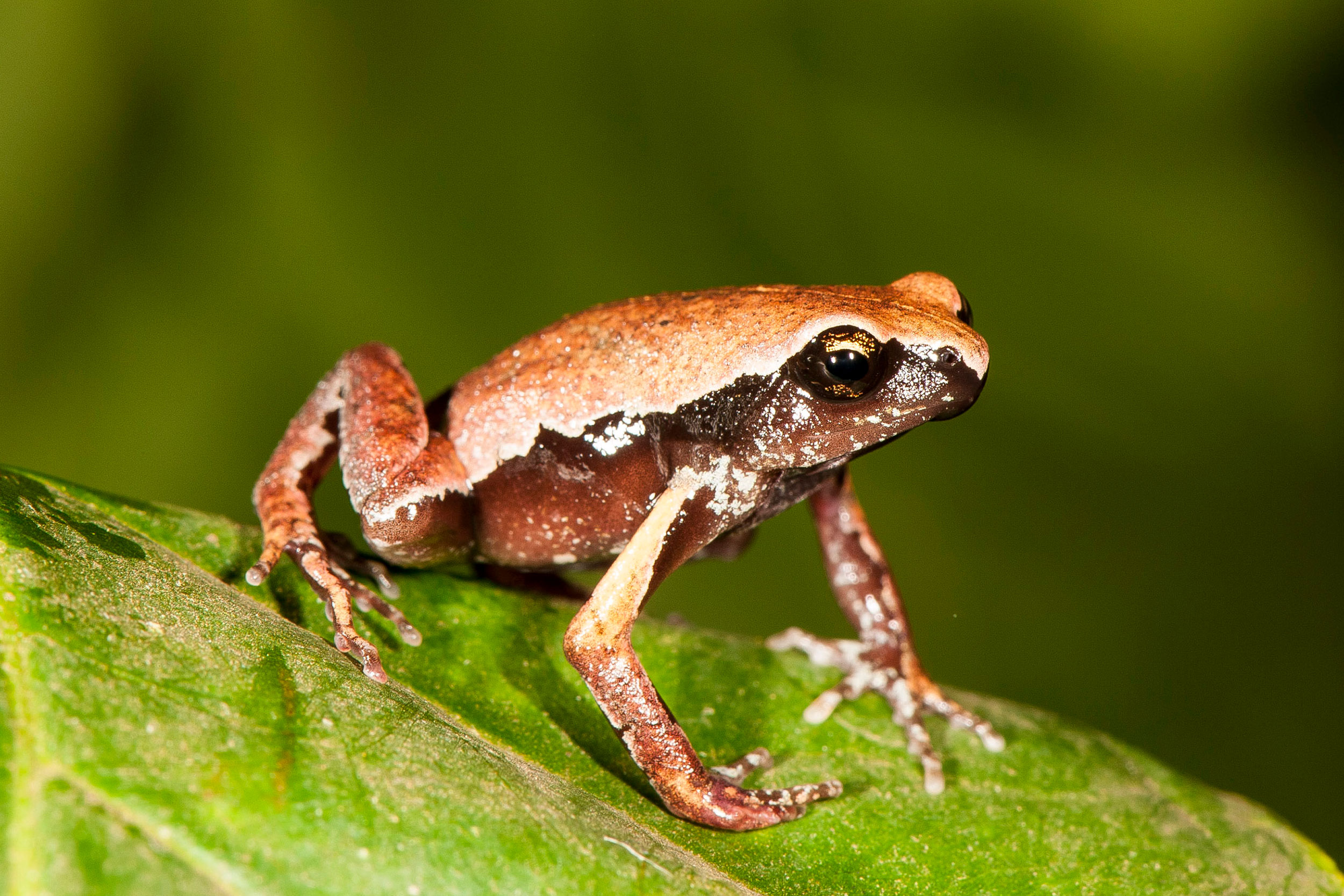
Sathyabhama Das Biju (from left), James Hanken, Harvard’s Alexander Agassiz Professor of Zoology, and Sonali Garg during a June 2023 field trip to study amphibians in the Western Ghats, a biodiversity hotspot in India.
Photo by A.J. Joji
Who will fight for the frogs?
Indian herpetologists bring their life’s work to Harvard just as study shows a world increasingly hostile to the fate of amphibians
Having pulled themselves from the water 360 million years ago, amphibians are our ancient forebears, the first vertebrates to inhabit land.
Now, this diverse group of animals faces existential threats from climate change, habitat destruction, and disease. Two Harvard-affiliated scientists from India are drawing on decades of study — and an enduring love for the natural world — to sound a call to action to protect amphibians, and in particular, frogs.
Sathyabhama Das Biju, the Hrdy Fellow at Harvard Radcliffe Institute and a professor at the University of Delhi, and his former student Sonali Garg, now a biodiversity postdoctoral fellow at Harvard’s Museum of Comparative Zoology, are co-authors of a sobering new study in Nature, featured on the journal’s print cover, that assesses the global status of amphibians. It is a follow-up to a 2004 study about amphibian declines.
Nearly 41 percent of amphibian species are threatened with extinction, compared with 26.5 percent of mammals, 21.4 percent of reptiles, and 12.9 percent of birds.
Biju and Garg are experts in frog biology who specialize in the discovery and description of new species. Through laborious fieldwork, they have documented more than 100 new frog species across India, Sri Lanka, and other parts of the subcontinent.
According to the Nature study, which evaluated more than 8,000 amphibian species worldwide, two out of every five amphibians are now threatened with extinction. Climate change is one of the main drivers. Habitat destruction and degradation from agriculture, infrastructure, and other industries are the most common threats to these animals.
Biju and Garg are among more than 100 scientists who contributed their data and expertise to the report, which shows that nearly 41 percent of amphibian species are threatened with extinction, compared with 26.5 percent of mammals, 21.4 percent of reptiles, and 12.9 percent of birds.
Frogs, says Biju, are excellent model organisms to study evolution and biogeography because of the extreme diversity of traits they acquired over millennia. They are also very sensitive to abrupt changes in their environment, including droughts, floods, and storms, which makes them a barometer for assessing the health of an ecosystem.

“But very frankly, what drives me the most is their beauty and diversity in shapes, form, colors, as well as behaviors,” said Biju, who has dedicated 30 years to frog taxonomy across biodiversity hotspots in or near India, rising to fame through his formal description in 2003 of the Indian Purple Frog. He is known as the Frogman of India.
India is home to one of the most diverse frog populations in the world, with more than 460 documented species. Of those about 41 percent are considered threatened, according to Biju. Habitat destruction and degradation from cultivation of tea, coffee, spices, and other products pose the most danger to the animals.
As a Radcliffe Fellow, Biju is focused on “outpacing nameless extinctions” — saving frogs before they go extinct without being classified or even recognized. He is looking to understand key areas within biodiversity hotspots for effective conservation planning. He is also writing a book — filled with fieldwork photos — on amphibians of India.
“Without understanding the species themselves, and properly identifying them and their geographic distributions, no meaningful conservation planning can be undertaken,” Biju said. “Unless we know what we have, we cannot know what we need to conserve, and where we need to conserve.”
Garg remembers a time, during fieldwork in the Western Ghats mountain range, when she held a frog so small it could sit on the tip of her finger. It was a moment of striking contrast with the everyday puddle-hoppers that surrounded her in the small Indian village where she grew up. “I never thought they could be so beautiful,” she said. “There was so much to discover, and they just became a calling.”
She joined Biju’s lab at University of Delhi as a graduate student to find, identify, name, and better understand these species. She has done extensive fieldwork in India, Sri Lanka, the Western Ghats, the Himalayas, and Indo-Burma. Her research focuses on capturing the diversity of frogs in India using integrative taxonomy, or finding new ways to classify organisms, as well as elucidating their evolutionary histories. She has worked to deepen her quest by incorporating DNA sequencing and CT scanning.


After 136 years from its original description, Günther’s shrub frog was recently rediscovered in the wild. Franky’s narrow-mouthed frog is among the threatened species.
Credit: S.D. Biju and Sonali Garg
Both she and Biju are using the vast herpetological collection of Harvard’s Museum of Comparative Zoology to inform their studies and provide benchmarking against potentially new species they uncover. According to MCZbase, the museum’s online specimen database, the Herpetology Department’s permanent research collection has 117,165 frog specimens, with 223 from India. The Vertebrate Paleontology and Special Collections departments hold additional specimens.
The researchers have begun a fruitful collaboration with James Hanken, Harvard’s Alexander Agassiz Professor of Zoology and curator of herpetology at the Museum of Comparative Zoology. Hanken is an expert on amphibian morphology, with a special emphasis on salamanders. He hosts Garg as a postdoctoral fellow in his lab, and recently joined the frog specialists on three field expeditions to India — two to the Himalayas, on the border with Tibet and Nepal, and another to the Western Ghats.
“In terms of amphibians that I saw, it was like going to the moon,” Hanken said. “It’s very exciting as a biologist to be immersed in a group of organisms that are completely new to you.”
Hanken and the Indian scientists plan to publish research describing frogs found in India, including their historical migration patterns, reproductive behavior, and genetic variation.
As for conserving endangered species, and the bleak picture the Nature study depicts, knowledge must lead to action, Biju said.
“Governments, individuals, and organizations need to join efforts to scale up global conservation action for amphibians to make sure they are thriving in nature,” he said. “Otherwise the ongoing amphibian crisis will have devastating effects for ecosystems and the planet.”
In some instances, conservation strategies have worked, added Garg. According to the Nature study, 63 species previously considered endangered have improved their status since 2004 due to concerted conservation efforts.
“There is hope,” Garg said. “Scaled up research and conservation efforts can play an important role in making sure amphibians are not just surviving, but also thriving in nature.”





